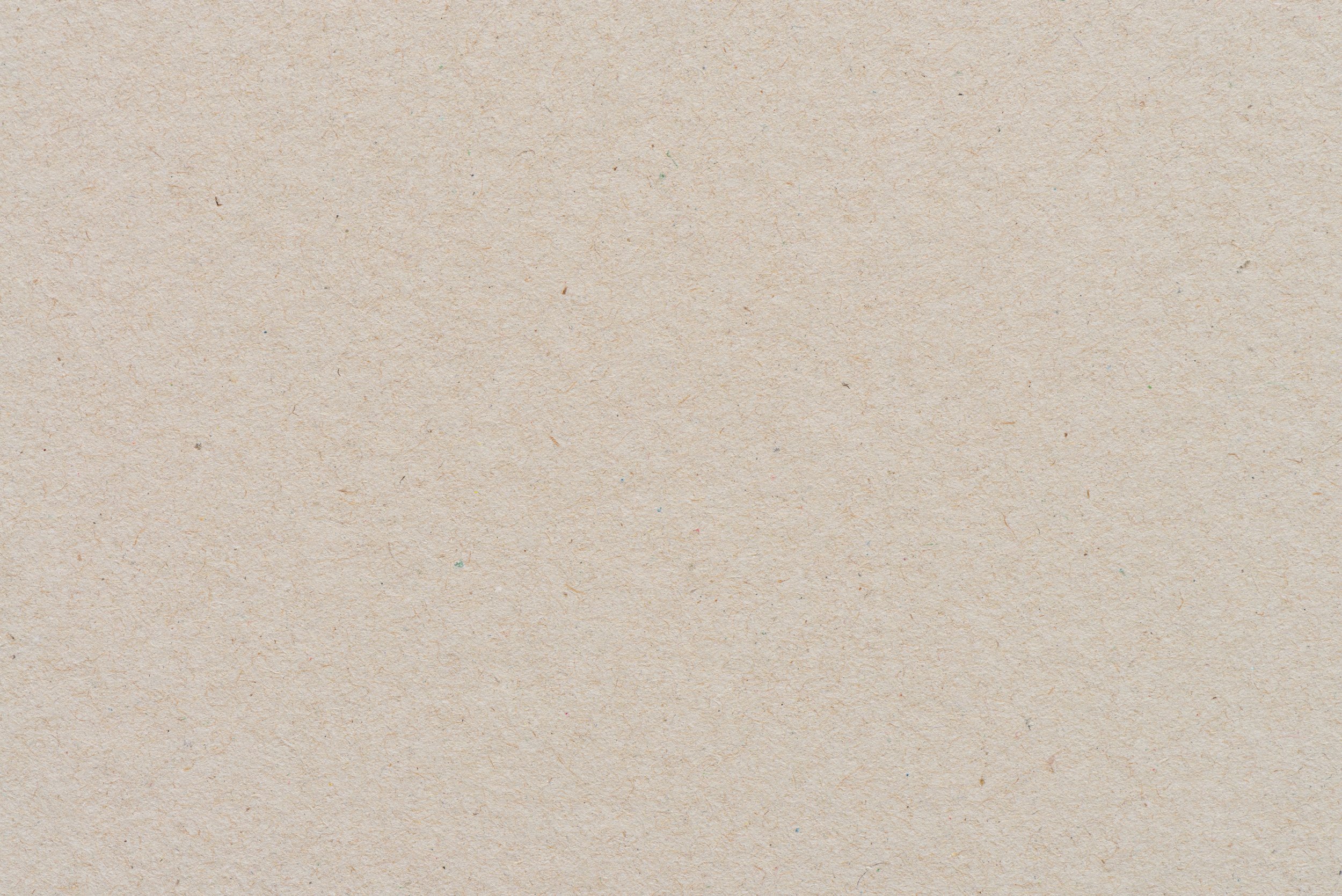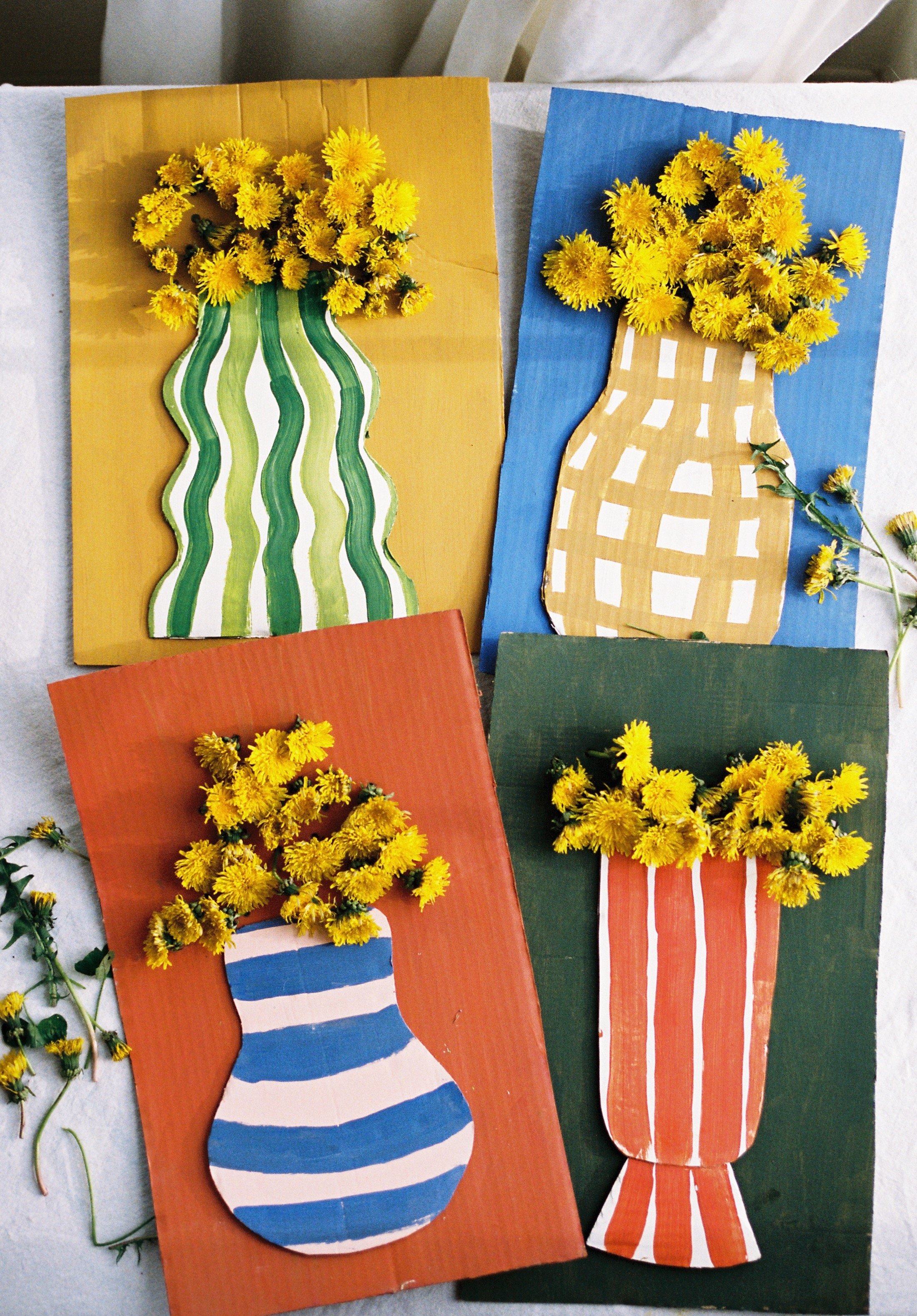
Dandelion Art
LESSON 4
Children will use dandelions to create artwork, sparking imagination and creativity.
Dandelion Paint
Freshly picked dandelion flower heads
Hot water
A mortar and pestle or a bowl and rock (the bowl will get scratched)
Watercolor paper
Paint brushes
Dandelion Cardboard Art
Cardboard
Acrylic paint
Scissors
Glue or hot glue if needed
A tool for poking holes in cardboard
Materials
Gather items needed for art activity of choice.
Preparations
Engage children in learning by asking thoughtful questions about the purposes of dandelions.
Provide opportunities for children to make observations as you make paint pigment together.
Support children as they practice being patient throughout the pigment extraction process.
Encourage creativity as children create their artwork.
Objectives for Teachers
Children reflect on their learning as they answer questions about the previous lesson.
Children develop fine motor skills as they manipulate paintbrushes and assemble dandelion cardboard art pieces.
Children explore the textures, colors, and scents of dandelions as they incorporate them into their artwork.
Children practice creativity, imagination, and critical thinking skills as they create.
Objectives for Children

Collect and Connect
Create actions and practice saying the poem “Dandelion” together. This is a fun question answer poem between the children and the dandelion.
Dandelion
“O dandelion, yellow as gold,
What do you do all day?”
“I just wait here in the tall green grass,
Till children come out to play.”
“O dandelion, yellow as gold,
What do you do all night?”
“I wait and wait till the cold dew falls,
And my hair grows long and white.”
“And what do you do when your hair is white,
And the children come out to play?”
“They take me up in their dimpled hands,
And blow my hair away.”

Activity Flow
Begin by reflecting on the previous lesson with your child by asking questions like:
How can dandelions be used to help people?
How did we color our playdough yesterday?
Which parts of the dandelion were useful to us when making our playdough?
2. Next, dive into today’s lesson where children will use dandelions to create art. Creating art with nature is beneficial for children as it encourages them to explore and appreciate the natural world around them. It also sparks creativity, imagination, and critical thinking as they create. I’ll share two art ideas below, or you can find additional ideas here.
Dandelion Cardboard Art
Start by cutting out cardboard shapes of your choice, such as a vase or a lion's head, using scissors.
Use paint or markers to color the cardboard pieces as you like.
With the help of a tool (screwdriver, sharp pencil, or pen) make holes in the cardboard where you want to place the dandelions.
Head outside to gather dandelions from your yard or nearby green spaces.
Attach the dandelions to the cardboard artwork by inserting their stems into the holes you created. Arrange them to resemble flowers in a vase or a mane around the lion's face.
Dandelion Paint
Head outside to collect a couple of handfuls of dandelions. After returning home, set out your materials.
Smash the dandelion flowers to extract the liquid using a mortar and pestle or a rock and bowl.
Add about 1 teaspoon of hot water to the flowers and mix thoroughly, continuing to press, grind, and smash the flowers until the mixture appears mushy and colored water forms.
Test the amount of liquid, aiming for about 1-2 tablespoons.
Let the liquid sit in the flowers for approximately 20 minutes to develop the paint color.
Optionally, you can create a color chart by painting on paper in intervals and observing color changes over time.
Once ready, pour the paint into a jar or use directly from the bowl. Encourage creative freedom while painting onto watercolor paper.
Dispose of excess paint and flower mush outdoors, or strain and store the paint in an airtight container for later use.
2. Wrap up the lesson by inviting your child to share their artwork with you. Encourage them to talk about what they love about their creation, their favorite part of the process, and how they feel about the finished piece. Help them find a special place to display their artwork, whether it's on a wall, a shelf, or in their room, to celebrate their creativity and hard work.





